 (*)
(*) The Key
(Posted by Max "The Knife" Kiejzik, 06/26/2009)
IMPORTANT: Any image tagged with this: (*) means it is an animated image. If an image is tagged and isn't moving, simply refresh the page.
(Update: 07/02/2009)
In my excitement and haste to publish my ideas, I made a critical error.
Rather than edit it out, I've decided to leave it in as I would have to make a major revision complete with several new detailed illustrations.
At the moment, I'm spent and don't have the energy for it.
The error is this: I state that one only needs three points upon which to lock in an ellipse.
This isn't true... one needs four points.
My error doesn't change much about the ideas, predictions, or conclusions I present on this page, but it does change the path upon which I arrive there.
Whether I'm right or wrong about the ideas I present here, the fact remains...
The Face on Mars doesn't just mean something, it means everything.
It is the Way, the Truth, and the Light.
***
On page 46 of Dark
Mission, after discussing
possible "unofficial" confirmation of Planet X, which I claim is
represented by the Fort here, Hoagland & Bara write:
"In 1999, evidence for yet another solar system member, this time in Sagittarius
(exactly opposite Orion in the celestial sphere) was cited in several news
reports.[41] In this case, the object was assumed to be about the same size as
the IRAS object, but many times more distant - between 25,000 and 32,000 A.U..
It's presence was implied by the patterns of long period comets"
After I started doing all the 19.5 reflections off The Key, it struck me how extremely reflective it is which jarred my memory about what I had read in Dark Mission.
While the Key is very much like the Fort insofar as it's extreme reflectivity, there are a few substantial differences.
The first difference I noticed was that there are zero reflections are found utilizing this HUGE circle.
(If this image isn't flashing, refresh the page)
(*)
 (*)
(*)
In fact, none of the reflections are found utilizing any of the circles scattered all over the Key.
Rather there are numerous arrows, ridges, and sites everywhere pointing the way.
The second major difference I noticed was that despite all the very provocative reflections, there isn't a single sphinx to be found anywhere upon the Key.
This leads me to believe it represents a planet rather than a star. Albeit, judging by all the reflections, a very substantial and influential planet.
After I saw how much more focused most of the reflections were upon 19.5 lines rather than my earlier assumption of 22.5 and 33.3, I decided to apply them to Gary's mosaic to see if there are any long range check points similar to the one's found using the Fort.
I found two.
The first long range reflection I found is along the same line as this reflection...

The line which reveals the above reflection applied to Gary's map looks like this...

... and the long range reflection looks like this...



When seeing this pointy headdress, I couldn't help but be reminded of the Fort's 'King' and his crown...

Especially when I knew from doing all the reflections on the Key, this menacing face...

Opens up like a Russian nesting doll to reveal more reflections hidden inside...
(*)
 (*)
(*)
Which subsequently reveal at long range what seems to be, arguably, another crowned king.
(Links to all five full resolution images: 01, 02, 03, 04, 05 , all ~ 2.5mb)
(*) (*)
(*)
(*)  (*)
(*)

The second long range reflection I found was along the same 19.5 line as this reflection.

This exact same reflection on Gary's map...

... reveals this long range reflection.



Granted, not as provocative as the Dragon, but ominous and powerful all the same.
What quickly became apparent upon realizing the significance of 19.5 when applied to this 'pyramid'...

... was how wrong I was about some early measurements I made regarding this shape.

Well, perhaps 'wrong' is too strong of a word.
I'll have to award myself partial credit here because this pyramid is in fact aligned partially to 22.5, but as I recently learned, more so to 19.5.
This pyramid is a very complicated, very fused pentagonal shape.
A very fused pentagonal shape that begins to make sense once I was able to lock in a working apex.
I started with the assumption that this green line, which reveals the reflection given above, passes through it.

Assuming the green line does pass through this pyramid's apex, it seriously conflicts with my earlier work from 2005.

So, I started from scratch.
First I brought in this 19.5 line.

Which reveals this remarkable image...

Next, I brought in two more lines: True North/South and True East/West.

Immediately noticeable is the True East/West line runs perfectly tangent past the south western arm of what's referred to in Carlotto's book as the NK Pyramid.

Even more impressive than that is where the True North line leads.

Why so impressive one might ask?
Because that specific line, on high resolution data, reveals this...

Which, also like a Russian nesting doll, eventually spins itself open to reveal this.

So, given these three meaningful intersecting lines and a fair assumption that I now have a working apex for this pyramid...

... utilizing the same ideas given by the Fort, I can begin predicting an orbital path for this extra planet.
My prediction looks something like this.
For comparison sake, I've included an overlay of the Fort's orbit as illustrated during my "Stubborn Assumptions" paper.
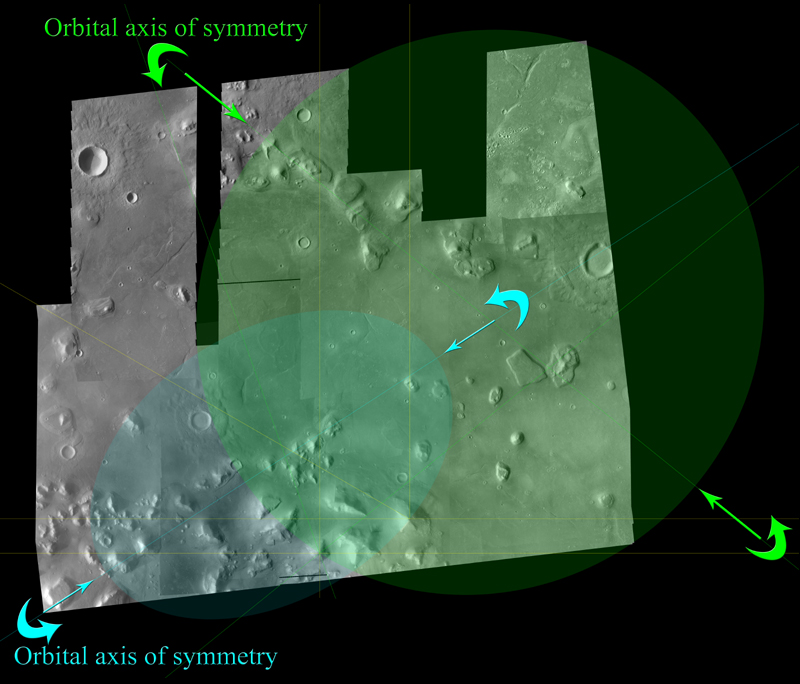
Notice the similarities.
1) Both orbital axis of symmetries reveal 'crowned' reflections.
2) Both orbits run tangent to the underside of each respective 'crown'.
3) Both orbits pass through the apex of each respective pyramid referred to by each of the two shorter reflections.
4) Both orbits are predicted utilizing 2 long range reflections. A longer 'crowned' reflection and a shorter 'ominous' reflection.
The biggest difference I see between the two setups is regarding apogee and perigee from the Face.
Remember that the Fort's orbital axis of symmetry and apogee/perigee are given as the same exact line.
Determining a second line of orbital symmetry was not necessary to reveal an accurate orbital path.
I was given three points upon which to lock in the ellipse.
1) The orbital axis of symmetry line.
2) The apex of the D&M pyramid.
3) The bottom corner of the King's crown.
The same is true for the Key's elliptical setup.
I was curious, however, to see if the second orbital axis of symmetry would actually be the apogee/perigee line from the Sun and/or reveal any similarities to the Fort's primary orbital axis of symmetry.
Indeed, as one can see below, it does.
Both apogee and perigee lines run tangent to either side of the Face revealing a fifth similarity.
In order to discover the apogee/perigee line for the Key's orbit, all one has to do is realize that because one is dealing with an ellipse, there must be two perfect axis of symmetries precisely 90 degrees away from each other.
Simply drop in that line, slide it up to the Face and presto... magic... a precise apogee/perigee line.
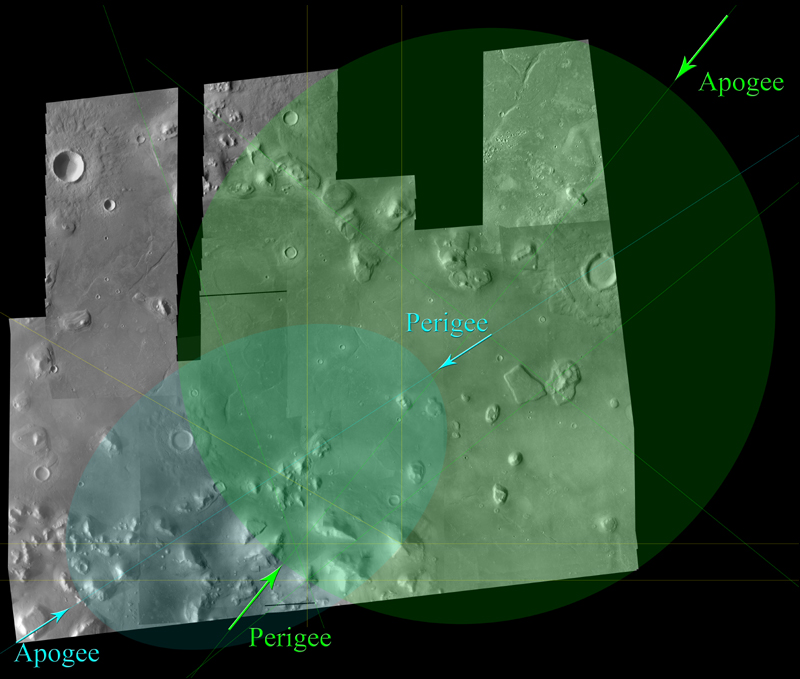
Reflections upon this green apogee/perigee line reveal this...

... and this...

... which then slide apart in either direction...

... again like a Russian nesting doll, to reveal yet another two faces nested within another perfect pentagon, plus a third face.
(*)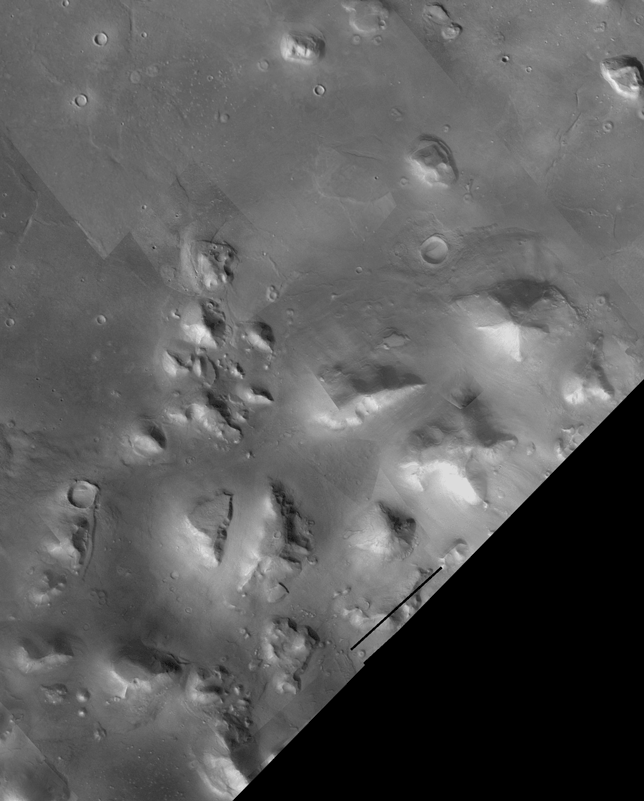 (*)
(*)
Which obviously adds adds up to another trinity at precisely 19.5 degrees.

But I'm forced to ask myself, why.
Why should one have to be 'sliding' these lines in order to reveal the exact reflections?
I think I know.... watch.
Recall the Fort's orbital set up.
Determining a second line of orbital symmetry for the Fort was not necessary to plot an accurate orbital path.
However, should one choose to drop it in, without being forced tweak anything, something very meaningful happens.

This second orbital axis of symmetry reveals the following reflection.

This reflection offers a precise connection between the Fort's and the Key's orbits via this specific pyramid.
This reflection leads to the following sequence of reflections.
(*)
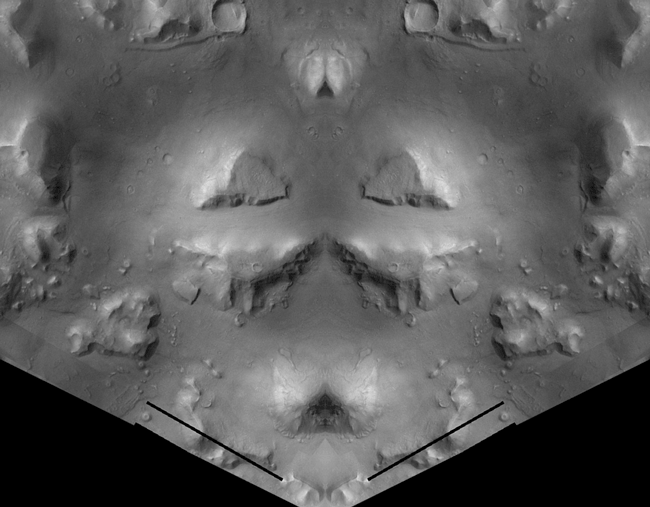 (*)
(*)
Logically, what all this means is...
'Sliding' into and out of conspicuously relevant reflections vis-à-vis significant orbital lines and their precise connectivity to specific monuments represents...
perturbation.
To illustrate the point, the blue circle represents the Dark Star's position.
The Green circle represents the Planet's position.
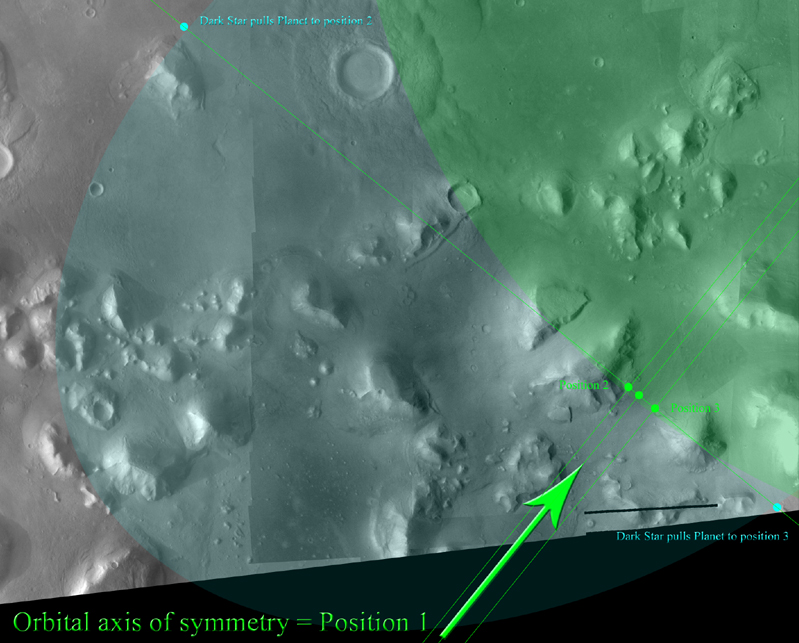
If and when the Dark Star is in the upper left hand corner, the much less massive Planet (assuming it was in the same position) would not be affected nearly as much as when the Dark Star is in the lower right hand corner.
Simply because of the distances involved.
Also note the Dark Star is doing most of the 'pulling' because it's far more massive than the Planet.
***
There's plenty more to be illustrated and explained here to be sure.
For example, exactly why these two orbital paths run tangent to the inside and outside of these circles positioned on these major monuments.
(*)
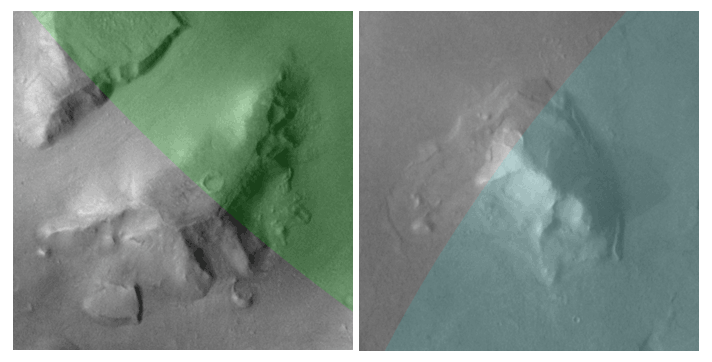 (*)
(*)
For starters, it's likely they're there to predict an actual physical effect as specific orbital alignments between these two spinning systems occur.
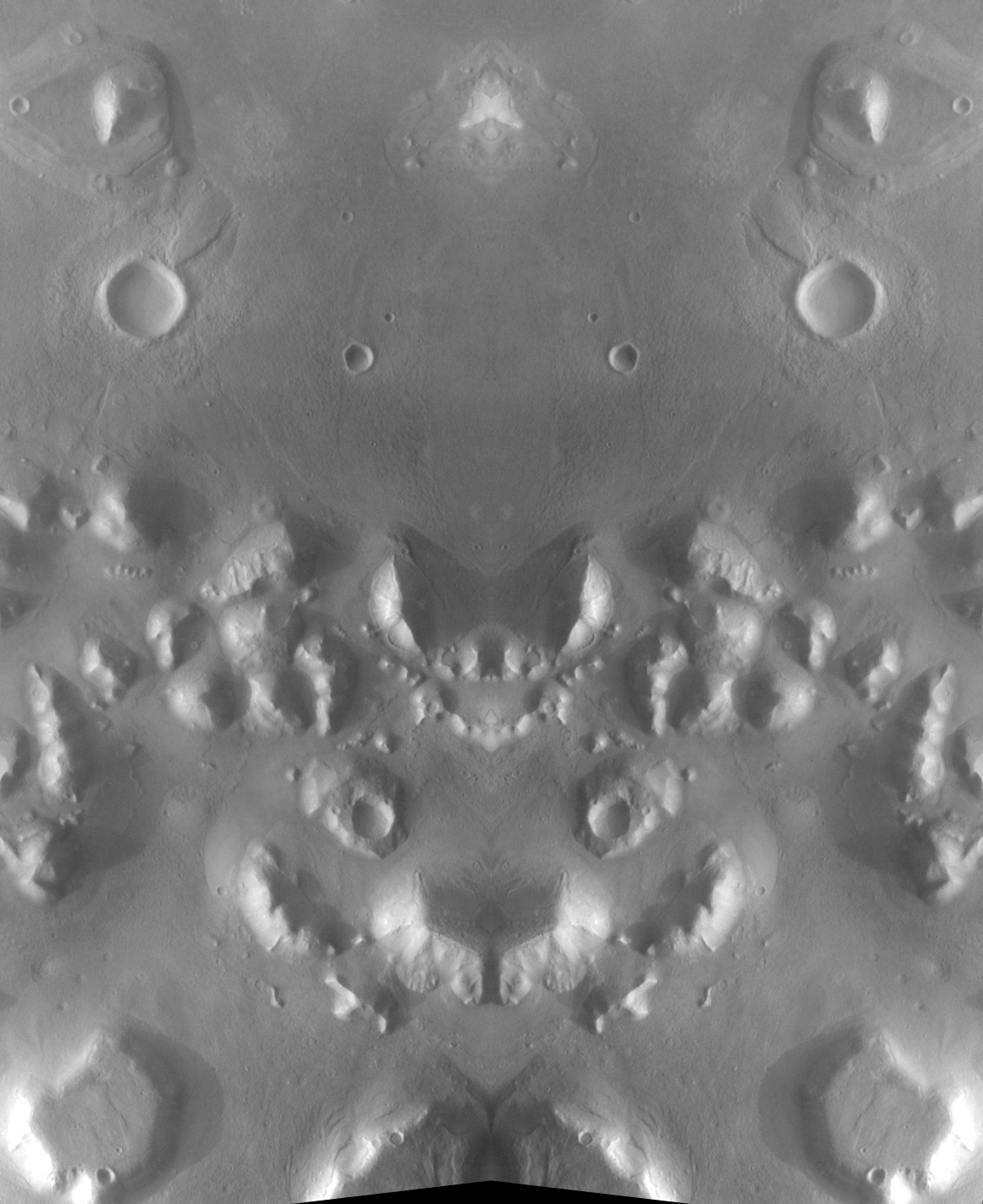
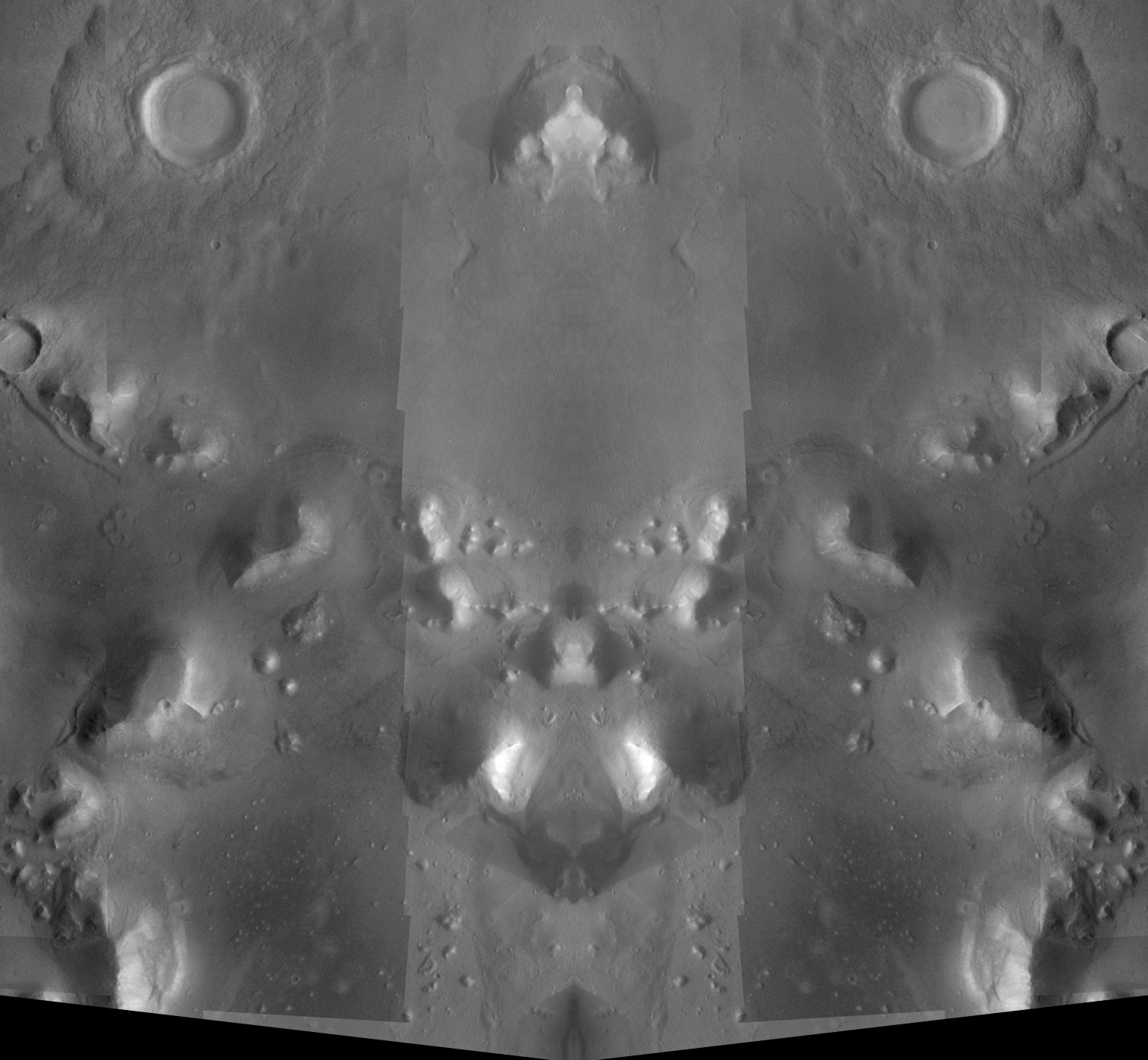
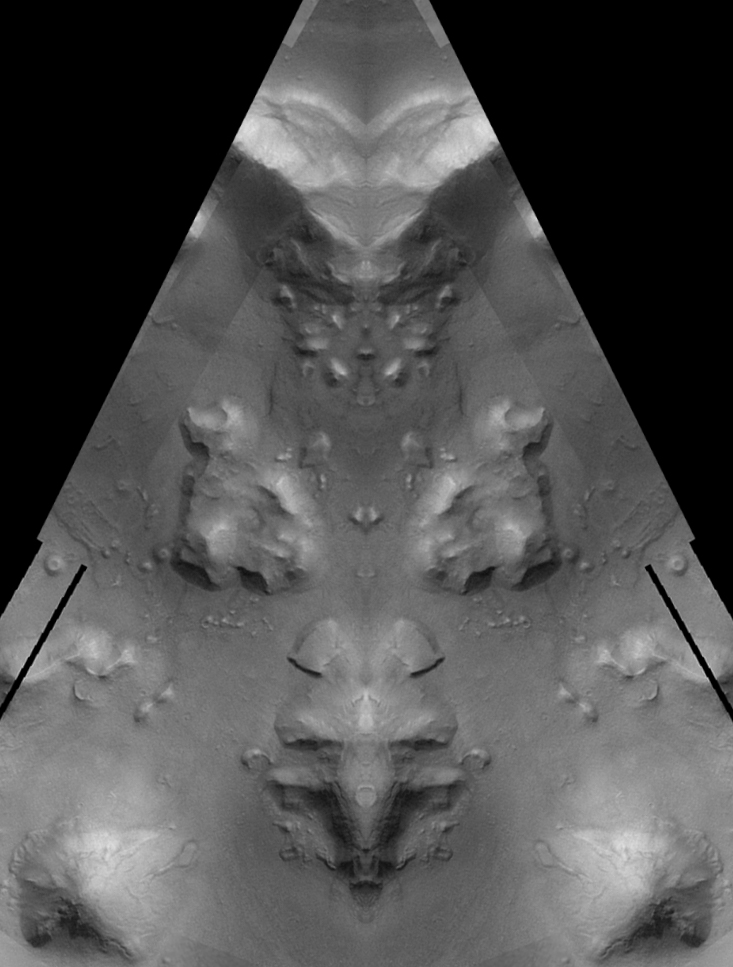
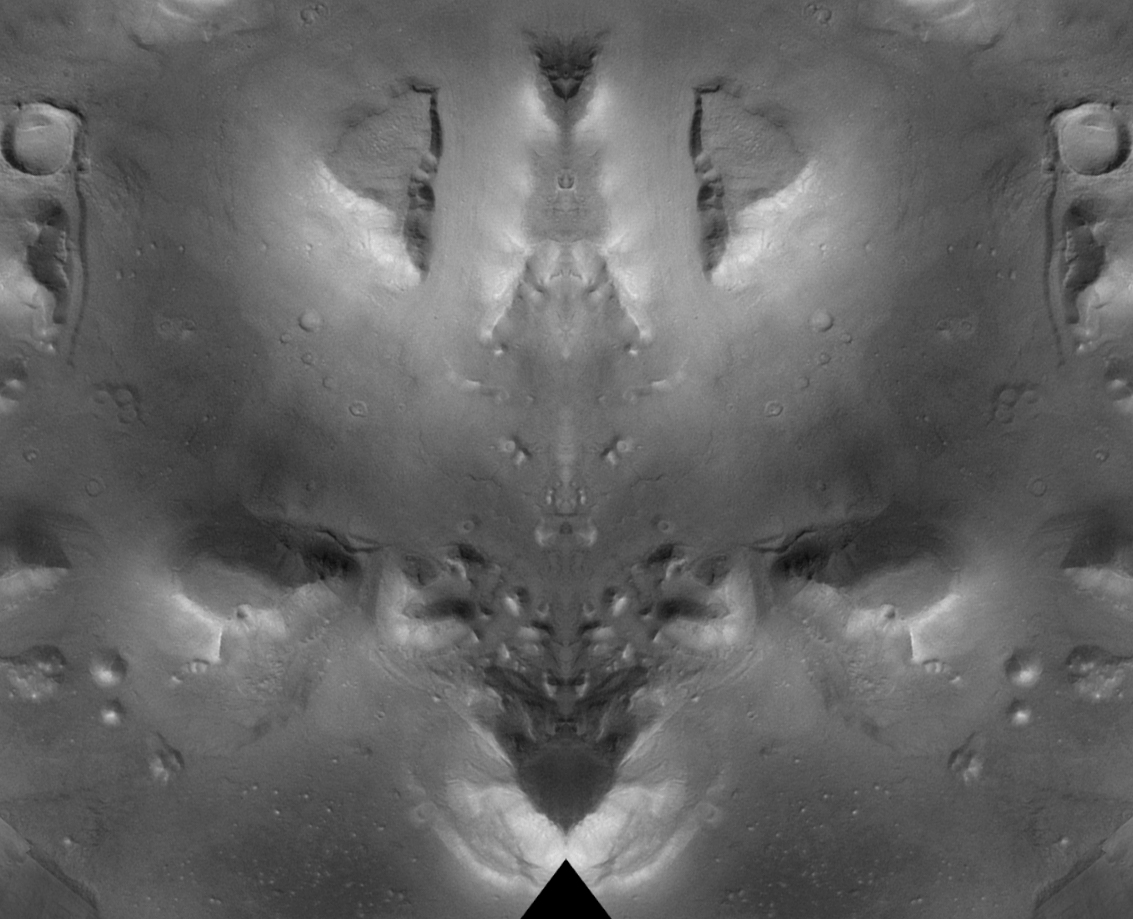
Furthermore, I don't think it is a coincidence that the two circles happen to be almost exactly the same size.
Remember what I posted at the beginning of this page: "The object was assumed to be about the same size as the IRAS object."
***
Needless to say, at this moment, I'm feeling pretty good about my predictions concerning the orbits of an eccentric dark star represented by the Fort and a very distant planet represented by the Key.
I'm anxious to see what kind of impact my work will ultimately have.
The suspense is killing me.